Monday, 25/06/2012: Paramaribo, Suriname
After nearly six weeks at sea, we were once again on our way to terra firma. One of our small guard vessels provided transport to Paramaribo port. After a somewhat bumpy night, we arrived at the sea buoy at first light. On our way to the mouth of the Suriname River, Mick soon spotted a Guiana dolphin. It moved incredibly fast, always surfacing somewhere totally unexpected, so we never got more than a quick glance at it. The Suriname River is wide and shallow, and although we didn’t need a pilot, we had to stick to the narrow shipping channel, which at times was quite close to land. We passed the Commewijne River on our port side, and from then on could see the relatively densely populated shores of the Suriname River. There were smart villas, temples, timber factories and jetties with rusty fishing boats.
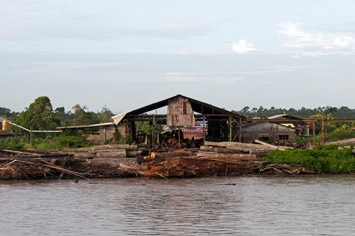
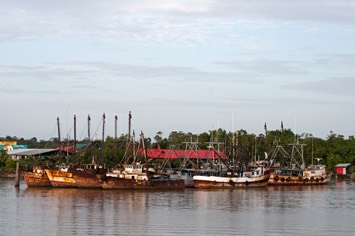
After nearly two hours steaming up the river we caught sight of a big bridge looming over the river and were told we would go alongside just this side of it. As we approached, we got our first glimpse of Fort Zeelandia, the cathedral and the old wooden houses of Paramaribo.
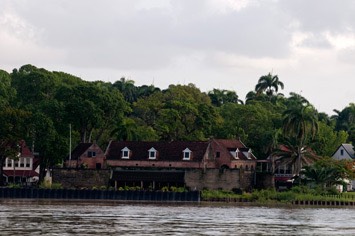

There was a rusty shipwreck in the middle of the river, which, it turned out, was a German cargo ship called the “Goslar”, which was scuttled by its crew during the Second World War. The wreck, lying on its side, had never been removed and remains in the middle of the river to this day, but has by now been colonized by some hardy plants, making a nice green contrast to the rusty red hulk.
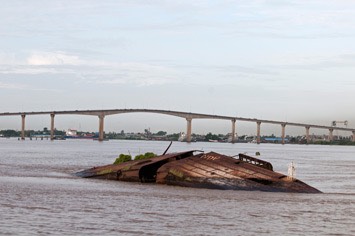

We went alongside and were promptly picked up by our driver Natatscha, who first took us to the METS office, a local travel agent who organised our time in Paramaribo. There we were given a big envelope with information about Suriname, our day trip on the following day and flight tickets to Guyana. We were then taken to our hotel, the Eco Resort Inn (www.ecoresortinn.com). It had a lovely wooden central building with a bar. Originally, we were supposed to arrive the previous day, and it seemed that we were lucky that our original booking had not been cancelled, as the normal check-in time was only 17:00! This meant we could move into our comfortable room in the Ara (macaw) wing of the hotel.
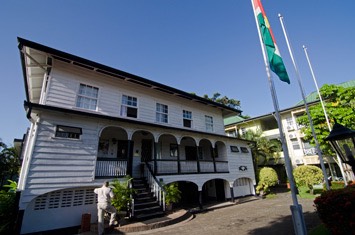
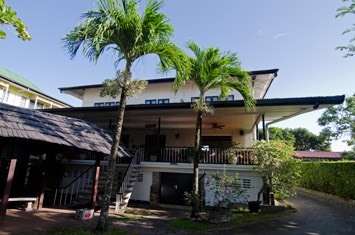
After a welcome shower and a brief rest we got back in touch with Natatscha to ask if she could organize a dolphin watching tour for us. Normally, they only seem to take place on certain days, but she knew one of the skippers and arranged for him to take just the two of us out in the afternoon. We had lunch in the hotel bar and, while eating it on the terrace, we could not only watch our first colourful South American birds, but also a large, stunning green iguana scuttling along the top of a hedge and up a tree.
After a short break we got ourselves ready to set off on a boat yet again! We had to laugh at ourselves; we just couldn’t resist the call of the water and the dolphins. Natatscha was kind enough to pick us up and drive us to the jetty further down the river. On the way she told us about the buildings we passed, like the fortified Chinese embassy and the president’s house. We also discovered that fuel was actually very expensive in Suriname! At the jetty we were met by Iwan, who took us out in his boat, which was like one of the water taxis we had passed in the morning. It had room for 22 passengers, but we had it all to ourselves. Iwan spoke good English and told us a lot about the river and the dolphins. Apparently, it is quite possible to see fairly large groups of them.
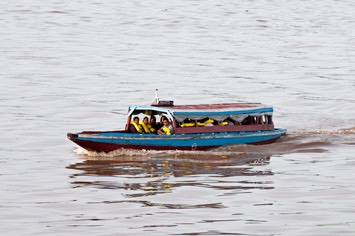
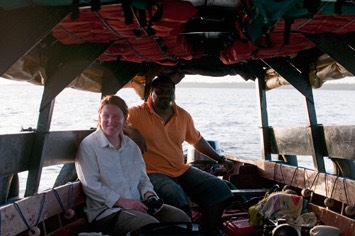
When we got closer to the mouth of the river, Mick spotted the first fins breaking the surface. It was a scattered group of about eight Guiana dolphins, and soon we realised that these little dolphins would not be easy to photograph! They were very unpredictable in their surfacing patterns, quick to roll at the surface and then they did not appear for quite a while. They reminded us a bit of harbour porpoises.
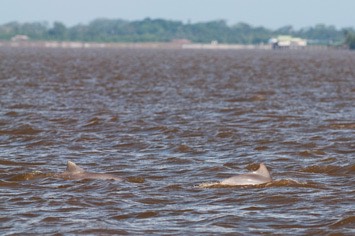
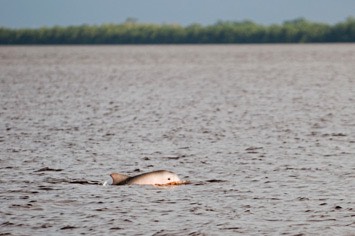
The animals were obviously feeding, so we had to follow them all over the place. We discovered that our best chance of getting photos was when they had actually caught fish, because they would then throw them into the air a couple of times in order to stun them and make them easier to deal with. Their prey was a type of flat fish that Iwan called a pocket fish. It was quite an amazing spectacle to see the dolphins tossing their prey like this.

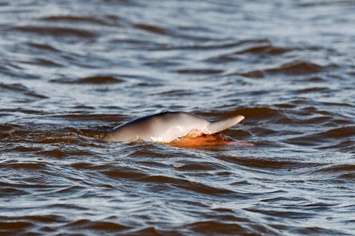

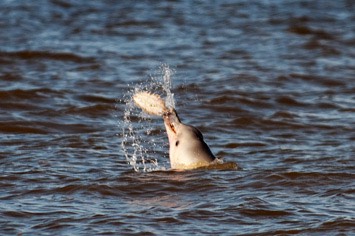
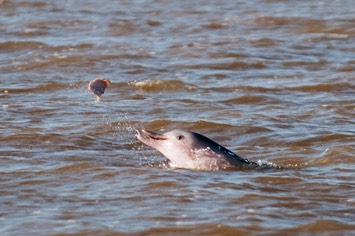
The magnificent frigate birds tried to use every opportunity to snatch a fish once it was thrown in the air, so we could use the presence of frigate birds as an indicator of where the dolphins were.
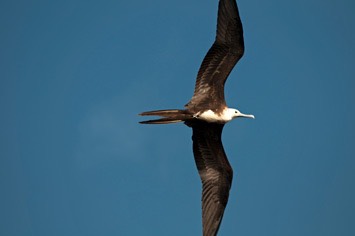

A little later we came across another, smaller group that had apparently finished hunting and was cruising along more slowly.
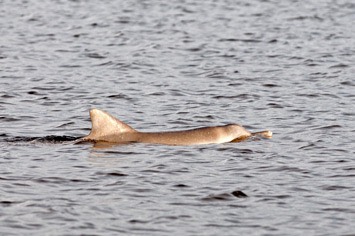
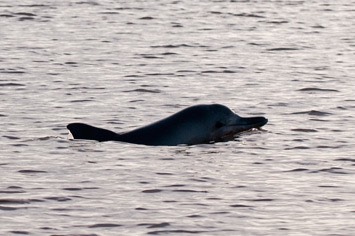


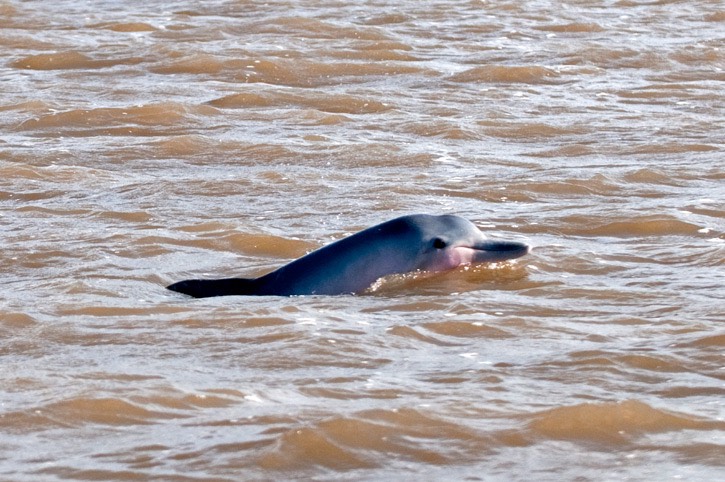
Occasionally, dolphins would pop up right next to the ship – albeit never with any warning, so we were completely taken by surprise every single time! After a couple of hours of “over there – oh, and over there!” we were so tired that we told Iwan to head back. We didn't actually arrive back at the jetty until it started to get dark. Although the dolphins turned out to be much more difficult to photograph than we had expected, we were very happy that we did the dolphin trip. We paid 60 Euros for about three hours and felt that this was very good value for money, especially as we did not need to share the boat. Going dolphin watching on one of these boats full of people would certainly not have worked for us. Natatscha was already waiting for us and took us back to the hotel. There we discovered that the hotel didn’t actually have a restaurant, but because we didn’t really feel like walking around in the dark, we just had some more snacks and Mick sampled his first bottle of Parbo beer.
Tuesday, 26/06/2012: Paramaribo, Suriname and flight to Georgetown, Guyana
After a good night’s sleep we woke up early. Breakfast was not very exciting, but we found ourselves a nice table with a view of a bird feeder with several different species snacking on bits of fruit. A very large lizard picked up fallen morsels. We really liked the hotel, but the food on offer would be a bit of a limiting factor should one stay longer, although it is possible to eat in the neighbouring Torarica Hotel, where we had some good meals during our next stay a couple of months later.
After checkout we found Desmond, our guide for our city tour, waiting for us. We packed all our bags into his comfortable Toyota car and off we went on our Par’bo (Paramaribo) city tour. It turned out that Desmond was a walking encyclopaedia! It seemed there was nothing he didn’t know and we learned so much about the city and Suriname in general from him.
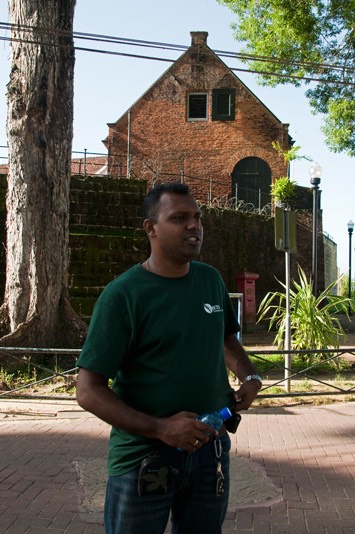
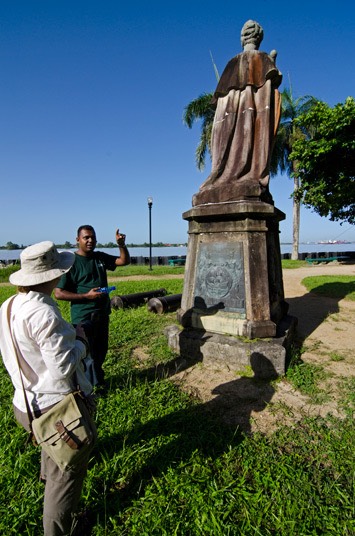
Paramaribo has quite a history: it started out as a Dutch trading post, but then changed hands between the Dutch and the English several times in the course of the next 200 years, before Suriname became independent in 1975. Desmond took us first to Fort Zeelandia, which was built right next to the river by the British in 1651, when it was called Fort Willoughby. During our first visit we didn’t have enough time to explore the interior of the fort, but we did so a couple of months later after our job finished. (We include some photos taken at this later point to illustrate the inside of the fort.) It has a small central courtyard enclosed by buildings now housing a museum, gift shop and a cafe. The museum is full of historical artefacts, including some rather weird drawings on the wall and a skull smoking a clay pipe. All this was guarded by a wonderful old boy, who was delighted to see some foreign visitors. In the shop we duly bought a necklace made from seeds of a local tree and the cafe even had a replica of a Guiana dolphin hanging on the wall!
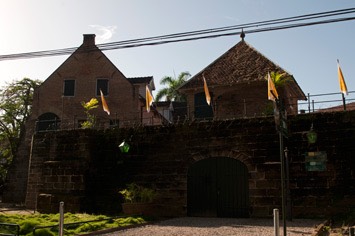
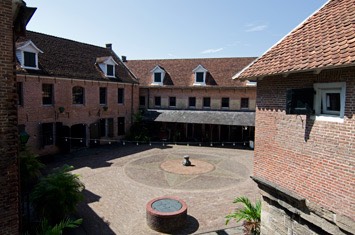

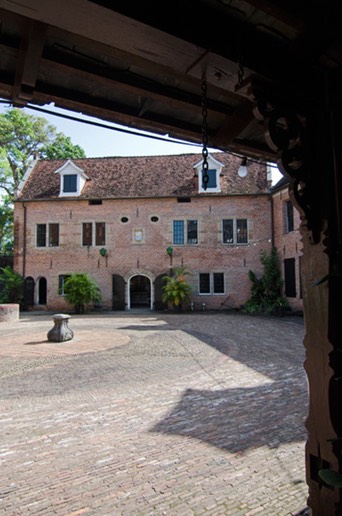
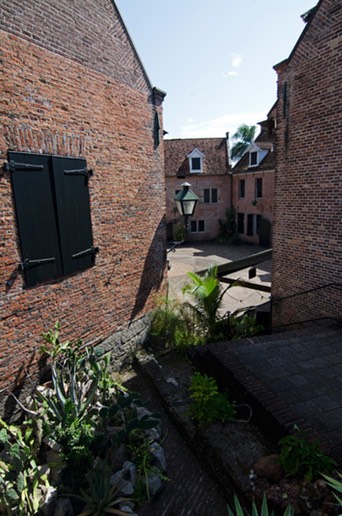
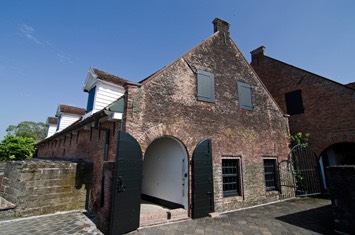






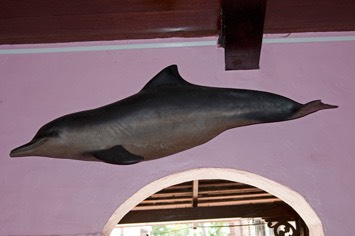
But the fort's quaint charm belies a rather dark history. In the old times parts of it were used as a dungeon and we could still see the small stone cells and shackles that the prisoners wore. More recently, the fort was used to hold and torture prisoners during the military government of President Dési Bouterse in the 1980s. One corner of the parapet was the stage for the gruesome “December murders” in 1982, when 15 government critics, mainly teachers, journalists and lawyers, were executed by firing squad.
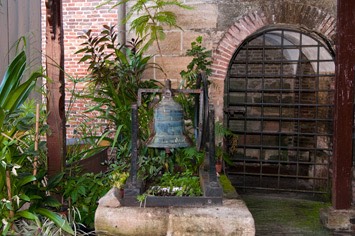
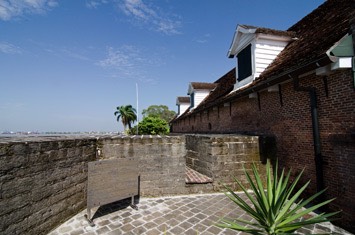
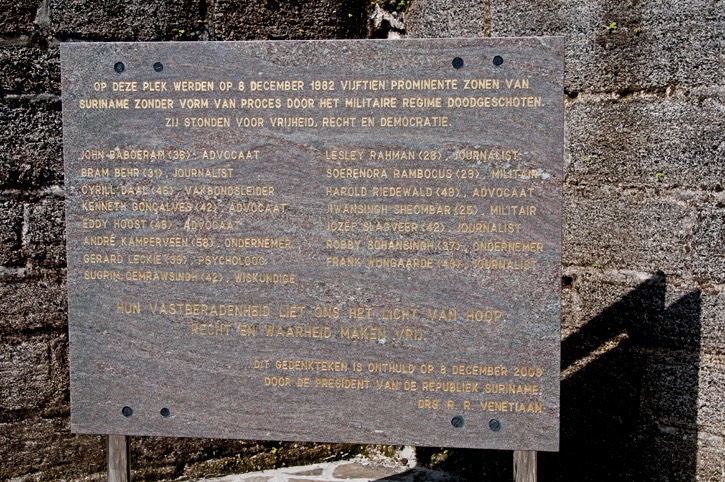
From the fort we walked along the Waterkant, where we could marvel at the old wooden buildings typical of Paramaribo. Quite a few houses in the city have been destroyed by fires at one time or another, but the buildings along the Waterkant remain prime examples of the old colonial style. Apparently the upkeep for these houses is very expensive these days, and we could see many buildings in varying stages of neglect throughout the old city centre. Some have now also been replaced by modern concrete versions. Nevertheless, Paramaribo has been placed on the UNESCO World Heritage list of historical monuments.
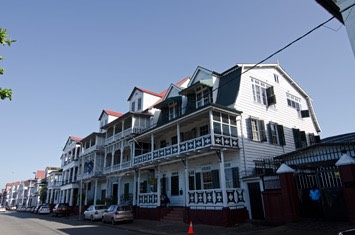
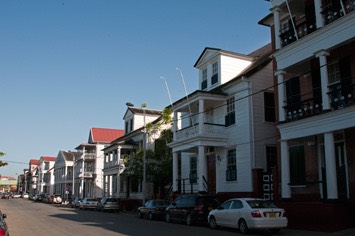

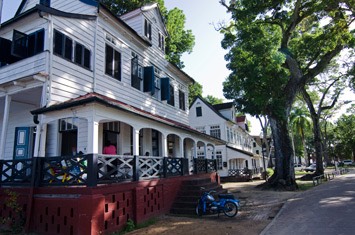
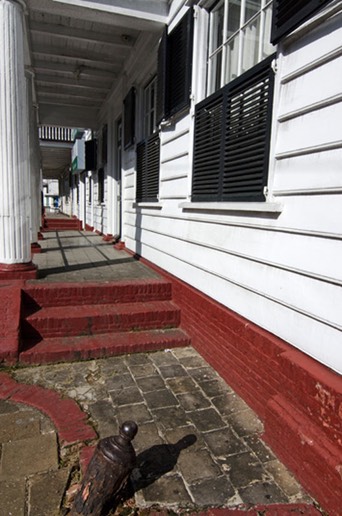
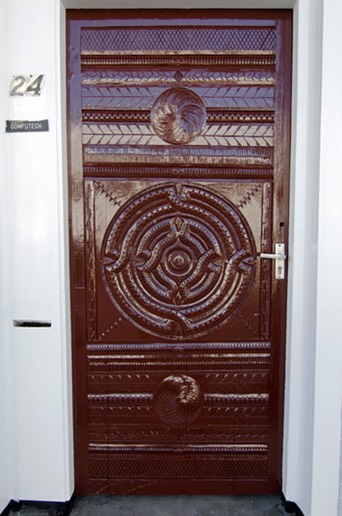
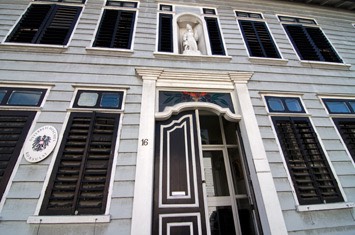


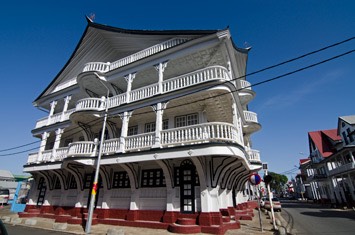
We continued on foot and briefly stopped at the Museum for Money, where we marvelled at square coins and the old 2 ½ Surinamse dollar notes. All through the town there were interesting things to look at, from colourful shops to old Dutch post boxes to the building of the school of folk music.
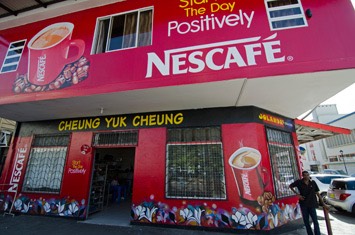
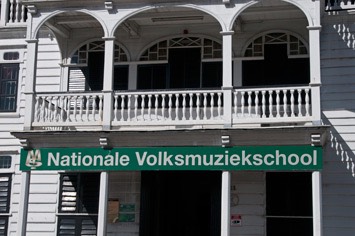
On we went to the St. Peter and Paul Cathedral, which is an imposing wooden building painted in blue and yellow. Unfortunately, there were building works going on outside the cathedral, so we always ended up with some fences in our photos. Apparently this cathedral is the biggest and tallest wooden structure in the western hemisphere – although the Guyanese claim the same for their St. George’s Cathedral in Georgetown! The towers of St. Peter and Paul’s are an impressive 50 m high.
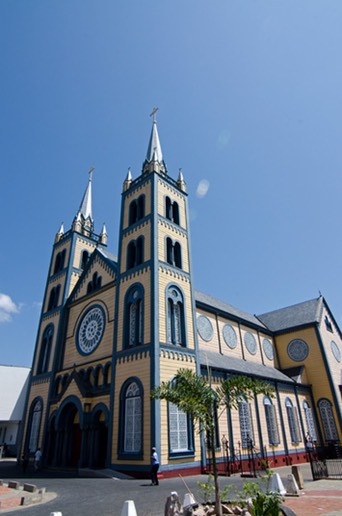

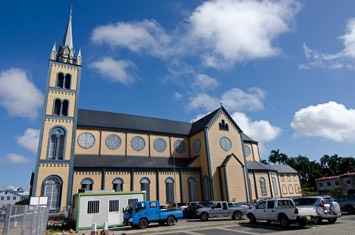
The inside of the cathedral is very simple and is entirely done in unpainted Surinamese cedar wood, with a light and airy feel from the nave’s large open windows. It is rather conservative for a Catholic church, but for us it was stunning. Desmond told us that the building had at one time been a theatre, which burnt down and was then rebuild as the cathedral.
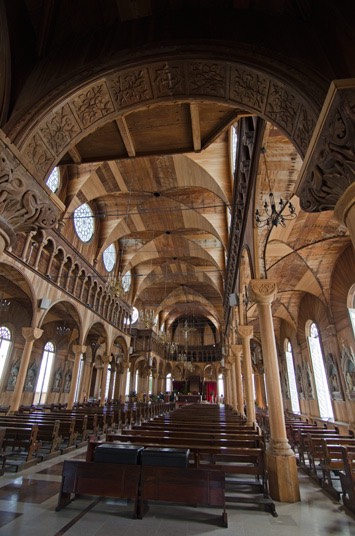


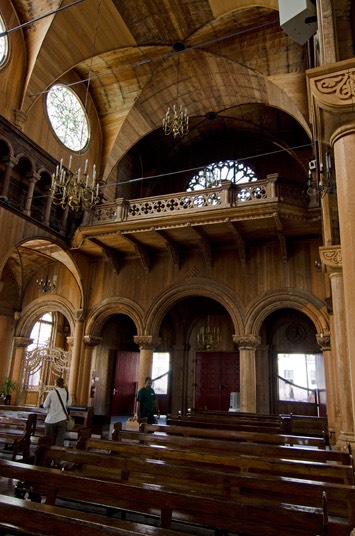
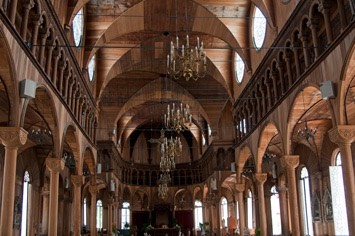

On our way back to the car we walked passed Independence Square outside the Presidential Palace. At the end of the Square, which is actually “only” a piece of lawn with a statue of Johan Pengel and another Indian man on it, were three houses in different styles. One belonged to the “mad Dutch woman” as she is known. This lady gained infamy for her terrible treatment of slaves, especially the females her husband had an eye on. She is even said to have served her husband the cut off breast of his favourite slave girl! Next in line was a British building with a clock tower. As most people did not own watches, people tended to turn up for work whenever they felt like it. The clock tower was the first of its sort in Suriname, which meant that there was no longer any excuse for turning up late for work! The third house was built in the French colonial style, but was unfortunately hidden behind lots of scaffolding at the time of our visit.
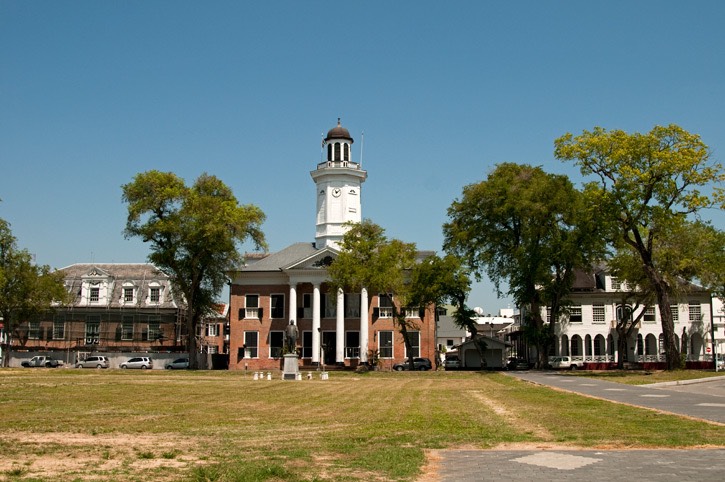
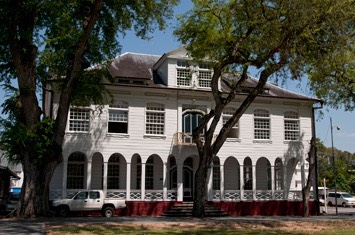
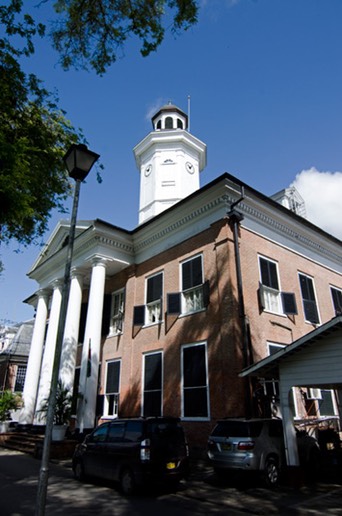

Throughout the city there are several monuments for Surinamese who fought in various wars around the globe. At the side of the Presidential Palace is the statue of George-Henry Barnet-Lyon, who was sent by the British to look after the interests of the indentured Indian workers, as they were subjects of the Commonwealth. He fought for them to be treated well, which rather annoyed the Dutch, who then stopped recruiting Indians and imported lots of Javanese workers.
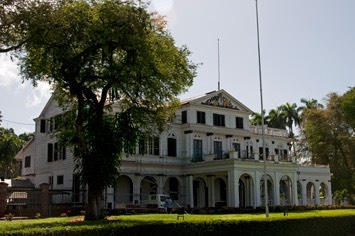
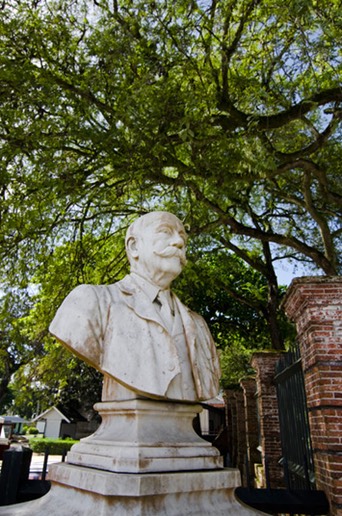

Suriname has many different ethnic groups, with the five big ones (represented in a nearby monument) being Amerindian (the indigenous people, who also appear in the country's coat of arms), African, Indian (locally known as Hindustani), Javanese and Dutch (or to be more inclusive: European). Nowadays there are also large numbers of Chinese in the country. Around 250,000 people live in Paramaribo, which is more than half of Suriname’s population. Amazingly, even today there are still descendants of runaway African slaves, the maroons, living in the jungle of Suriname and following their old traditions including creating some of the wonderful carved wooden doors in the old houses.


After a walk through the Palm Garden behind the Presidential Palace we returned to the car, where we had a snack and duly had our photograph taken with the big, modern art "I love SU (Suriname)" sign.
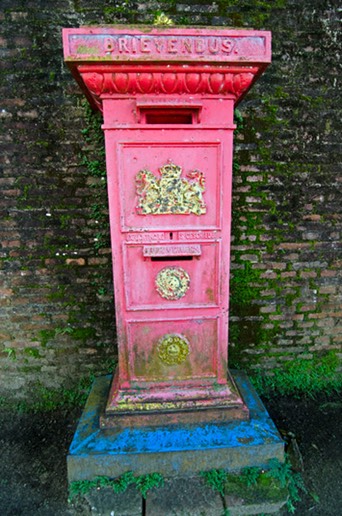
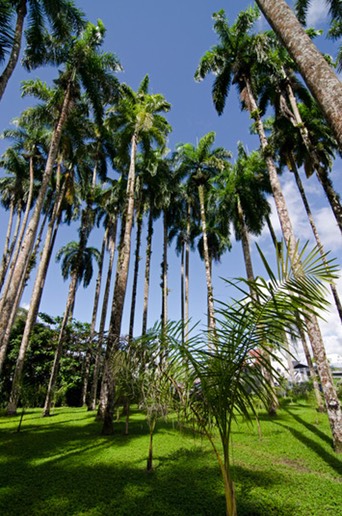

We then drove to a place in the city where a big mosque stands right beside a synagogue. According to Desmond, people of different faiths live happily together until it comes to election times, when the different ethnicities support different political parties.
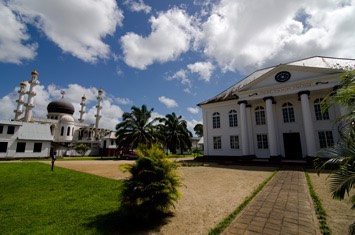

We then crossed the river over the big bridge and paused at a Hindu shrine.
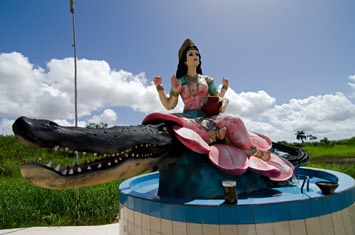
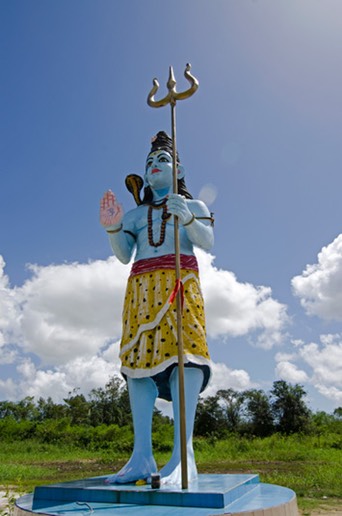

We also passed the Chinese cooperation building, and Desmond told us that more and more Chinese are coming to Suriname, taking over shops and buying up land. Apparently quite a few people are rather worried about this development, as the Chinese are making special agreements with the government. We wondered if that was the reason why the Chinese embassy appeared to be so heavily fortified – are they expecting trouble in the future?
We continued to the old plantation Peperpot, which was established by the English in the 1600s, passing groves of cocoa trees as we drove along. Nowadays, the manager’s old residence is still in good condition and there are the old workers' quarters and an ancient shed and factory. Apparently, Peperpot is to be renovated and turned into a complex where tourists can stay. While looking at some old machinery, Mick was attacked by some tiny ants with extremely fierce stings, which lasted for the entire duration of our South American holiday!

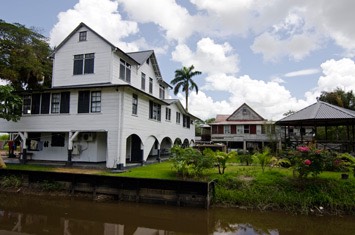
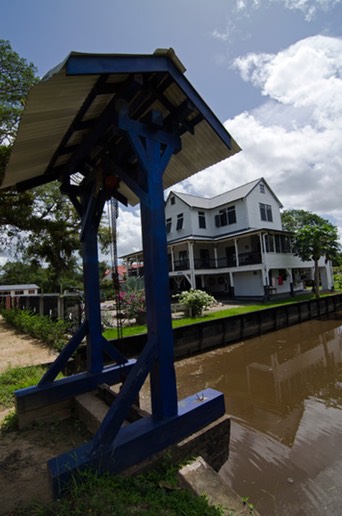
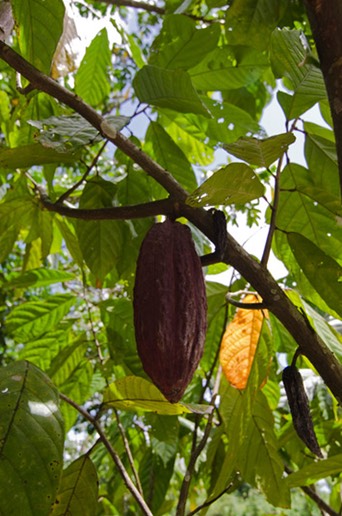

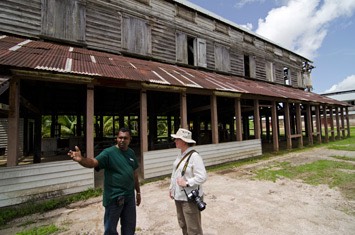
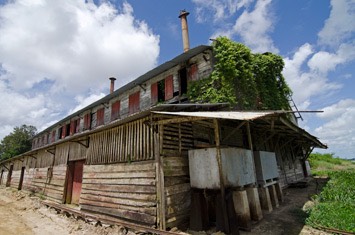
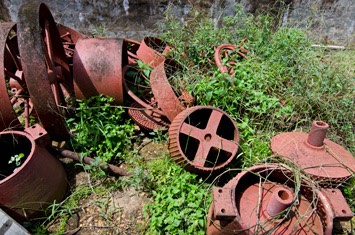
As we were in a bit of a hurry, we didn’t stay long and drove on to Nieuw Amsterdam, which is a small fort with lots of cannons lying around all over the ground. It sits right at the convergence of the Suriname and Commewijne Rivers, a strategically important position that guards the approach from the sea. From one of the watchtowers we had a great view over the rivers and the shore on the other side. There was an old wooden building there too, but apparently nobody lives there any longer, as it is reputed to be haunted by a ghost.
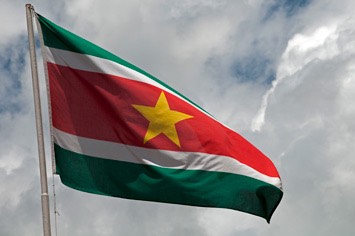


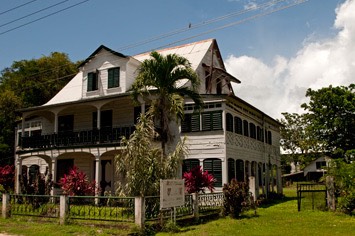
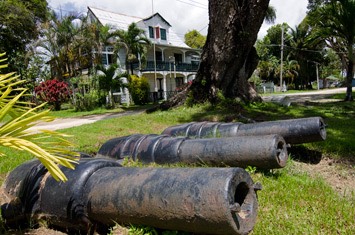
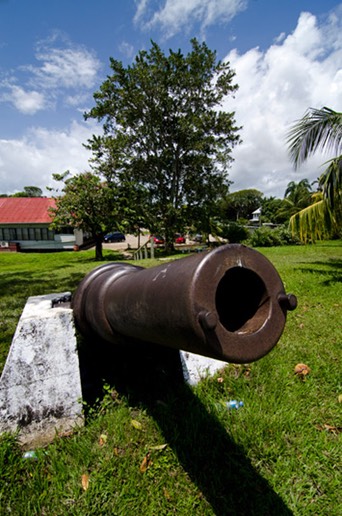
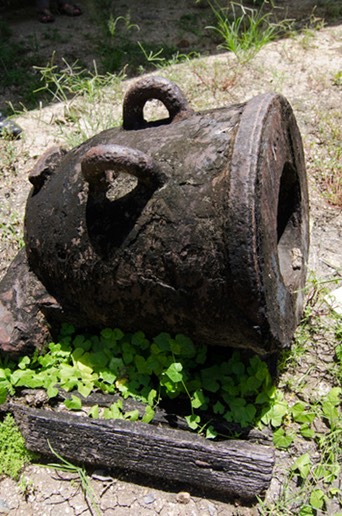
As time was by now pressing, we went to a Javanese restaurant for a quick lunch before driving to Zoog-en-Horp airport from where we would fly to Georgetown. We arrived there in good time, but rather exhausted from our six-hour trip and with our heads buzzing with the wealth of information that poured out from Desmond. It was really an amazing tour and we can highly recommend Desmond as a tour guide for Paramaribo and its surroundings!
Wilderness Explorers, our travel agents in Guyana, had warned us that the baggage weight for the small aircraft we would be flying in was strictly limited. As we had loads of gear that we needed to take off the ship, we ended up having to pay 75 US dollars for excess baggage! At the little immigration desk we had another nasty surprise. The ship’s agent had returned our passports with a letter saying that we had come off a ship. The very friendly official looked at our passports and paper work and said, “I’m very sorry, but I can’t stamp you out of Suriname!” What??? We pointed to the letter from our agent and told him that we were seamen, but he only repeated what he had said earlier. We had visions of being stuck in Suriname and our holiday going down the drain. When we asked him why he couldn’t stamp us out, it turned out that when we arrived on the ship, we were apparently never stamped into Suriname, and therefore we couldn’t be stamped out again! Quite unexpectedly, and without any pleading, the kind official said that as long as we didn’t insist on a stamp we were free to go, so we jumped at the opportunity and swiftly whizzed through to the departure room. Phew! That could easily have caused some hassle, but fortunately, it worked out fine. After looking at all the small planes taxiing or standing around and wondering, which of those would be our Gum Air flight, it turned out that we would actually fly on one of Trans Guyana Airways Cessna Caravans, which took some twelve passengers. We managed to get seats directly behind the pilot, so we had great views of Paramaribo and the shipwreck on take off and the sugar cane fields and Georgetown on our approach.
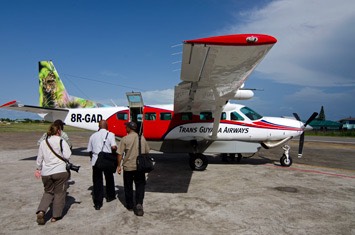

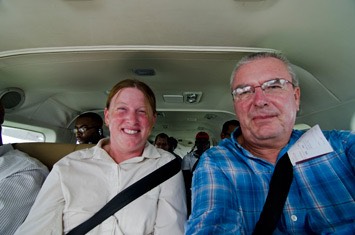

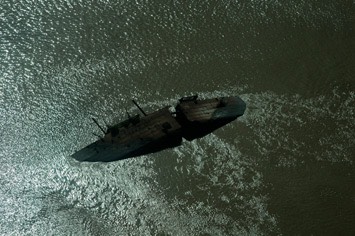
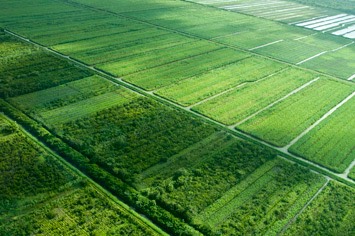
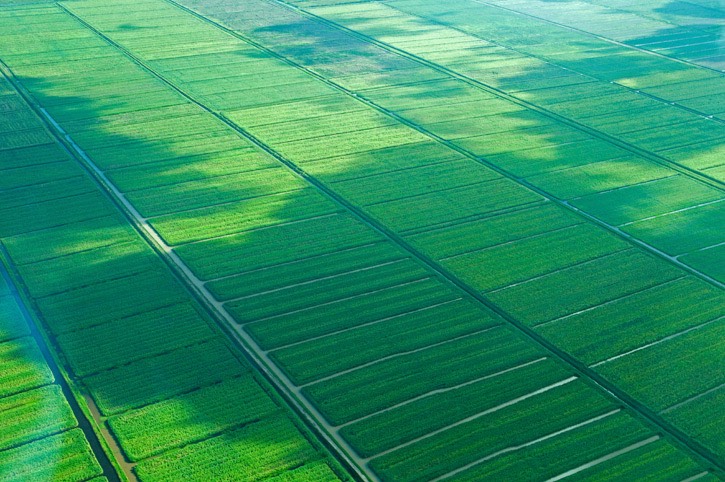


We landed at Ogle Airport in Georgetown and had to go to different immigration counters, where Mick got a three-month visa and Maren one for only one month! Outside the airport Dennis, an ebullient chatty guy with ancestors from Madeira, met us. He took us to the Wilderness Explorers offices (www.wilderness-explorers.com), where we were given an information pack about our trip, as well as our tickets for the flights to Mabaruma for the following morning. Dennis then drove us to Cara Lodge (http://wilderness-explorers.com/guyana/caralodge.html), our home for all the nights we would spend in Georgetown. It is a lovely old colonial building, actually one of the oldest wooden buildings in Georgetown, built in the 1840s. We learned that many important people including Jimmy Carter, Prince Charles and Mick Jagger have stayed there. Cara Lodge was also the location where the planning of a failed bomb plot was carried out. We immediately fell in love with the building, with its old wooden Demerara shutters, polished wooden floors and a courtyard with an old tree in the middle of it. After our long day walking through Paramaribo, followed by the flight, we were actually quite tired. As we would be picked up at 6:45 the next morning, we decided to have only a light snack in the courtyard, rather than a full-blown meal in the highly recommended restaurant, and we crashed out soon afterwards.